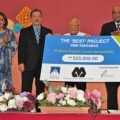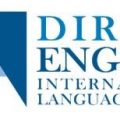MSRA won in eight out of eleven machine translation tasks it undertook as part of the challenge
SINGAPORE – Media OutReach – 22 May 2019 – Microsoft Research Asia (MSRA) has achieved eight top places in the recent machine translation challenge organized by the 2019 fourth Conference on Machine Translation (WMT19), out of the eleven tasks it undertook. Overall, there are nineteen machine translation categories in WMT this year.
MSRA achieved first place in machine translation tasks for Chinese-English, English-Finnish, English-German, English-Lithuanian, French-German, German-English, German-French and Russian-English. Three other tasks were placed second in their respective categories, which included English-Kazakh, Finnish-English and Lithuanian-English.
As one of the leading machine translation competition globally, WMT is a platform for leading researchers to demonstrate their solutions, as well as to understand the continuous evolvement of machine translation technology. Now in its 14th year, more than 50 teams globally from technology companies, leading academic institutions and universities participated in a bid to demonstrate their machine translation capabilities.
The organizers aimed to evaluate current machine translation techniques for the languages other than English, as well as to examine the challenges between European languages, including low resource and morphologically rich languages.
Improvements to Multi-dimensional Algorithms for Better Machine Translation Outcomes
“This year, the MSRA team applied innovative algorithms to its system, which significantly improved the quality of the machine translation results. These algorithms were used to improve the platform’s learning mechanism, pre-training, network architecture optimization, data enhancement and other processes required so that the system can perform better,” explains Tie-Yan Liu, Assistant Managing Director of MSRA.
The innovative algorithms leveraged this year include:
- MADL?Multi-agent dual learning
- MASS?Masked sequence to sequence pre-training
- NAO?Automatic neural architecture optimization
- SCA?Soft contextual data augmentation
The achievement follows the 2018 breakthrough whereby researchers in MSRA and Microsoft Research U.S. labs reached human parity on a commonly used test set of news stories, called newstest2017, which was developed by a group of industry and academic partners and released at WMT17. The system is able to translate sentence of news articles from Chinese to English with the same quality and accuracy as a person.
“The realm of machine translation will continue to evolve with better algorithms, data set and technology. However, much of our research today is really inspired by how we humans do things. Language is complex and nuanced, as people can use different words to express the exact same concept. Hence, developing multi-dimensional algorithms is important in evolving machine translation systems so that they can deliver better outcomes,” said Liu. “Our achievement at WMT19 serves to the further development of the field, whereby we hope that machine translation can become better in the years to come.”
For example, Microsoft Translator, a multilingual machine translation cloud service, has integrated some of the previous solutions developed by Microsoft Research teams globally to enhance the accuracy of the tool. Now, the research teams plan to integrate the new algorithms used for this year’s WMT challenge to improve its offering.
.jpeg)
About Microsoft
Microsoft (Nasdaq “MSFT” @microsoft) enables digital transformation for the era of an intelligent cloud and an intelligent edge. Its mission is to empower every person and every organization on the planet to achieve more.






